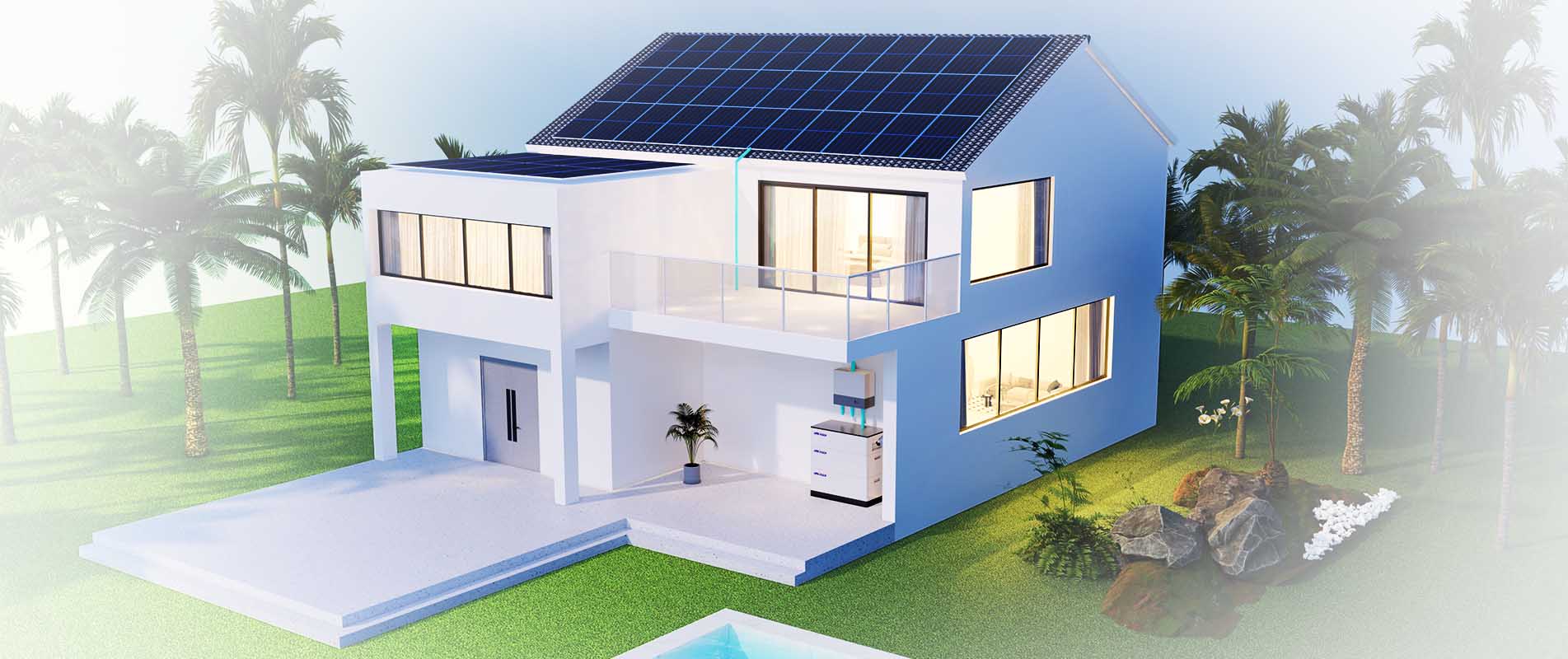Traditional residential energy supply mainly relies on the power grid, so it often faces the problem of unstable energy supply during peak periods or energy shortages. Meanwhile, traditional energy sources such as coal and natural gas have also had serious negative impacts on the environment. As an emerging solution, residential energy storage systems can effectively store renewable energy such as solar and wind energy, and provide them to households when needed, thereby reducing dependence on traditional energy, reducing carbon emissions, and achieving self-sufficiency in residential energy.
WHAT IS A RESIDENTIAL ENERGY STORAGE SYSTEM (ESS)?
At present, residential energy storage systems are mainly combined with PVs, forming hybrid, coupled, off-grid and other home PV + home energy storage systems.

|
|
Hybrid home PV + home ESS |
Coupled home PV + home ESS |
Off-grid home PV + home ESS |
PV energy storage energy management system |
|
System Composition |
Generally composed of PV modules, lithium batteries, hybrid inverter, smart meter, CT, power grid, grid-connected loads and off-grid loads.
|
Also known as AC retrofit PV + ESS, generally consists of PV modules, grid-connected inverter, lithium battery, AC coupled energy storage inverter, smart meter, CT, power grid , grid-connected load and off-grid load. |
Generally composed of PV modules, lithium batteries, off-grid energy storage inverters, loads and diesel generators. |
Generally composed of PV modules, grid-connected inverter, lithium batteries, AC coupling energy storage inverter, smart meter, CT, power grid and control system. |
|
Battery Charging and Discharging Mode
|
Directly charge the battery through DC-DC conversion of PV energy, and can also achieve bidirectional DC-AC conversion for battery charging and discharging. |
Convert PV power into AC power through a grid-connected inverter, and then convert the excess power into DC power through an AC-coupled energy storage inverter for storage in batteries. |
Directly charge the battery through DC-DC conversion of PV energy, and can also realize bidirectional DC-AC conversion for charging and discharging of batteries. |
|
|
Working Principle |
During the day, PV power generation first supplies the load, then charges the battery, and finally the excess power can be connected to the grid; At night, the battery is discharged to supply the load, and the shortfall is supplemented by the grid; When the power grid fails, PV power generation and lithium batteries only supply power to off-grid loads, and the on-grid loads cannot be used. In addition, the system also supports users to set their own charging and discharging times to meet their power needs.
|
During the day, PV power generation first supplies the load, then charges the battery, and finally the excess power can be connected to the grid; At night, the battery is discharged to supply the load, and the shortfall is supplemented by the grid; When the grid is out of power, the lithium battery only supplies power to the off-grid load, and the grid-connected load cannot use. In addition, the system also supports users to set their own charging and discharging times to meet their power needs.
|
During the day, PV power generation first supplies the load and then charges the battery; At night, the battery discharges to supply the load. When the battery is insufficient, diesel generators supply the load. |
|
|
System Features |
1. Highly integrated, which can significantly reduce system installation time and costs.
2. Intelligent control can be realized to meet users’ electricity needs
3. Providing users with safe power guarantee when the power grid is outage.
|
1. Existing grid-connected PV systems can be transformed into energy storage systems with low investment costs.
2. Providing users with safe power guarantee when the power grid is outage.
3. Compatible with grid-connected PV systems from different manufacturers
|
1. Can meet daily electricity needs in areas without power grid
2. Can be combined with a diesel generator to supply the load or charge the battery
3. Most off-grid energy storage inverters do not have grid-connection certification. Even if the system has a power grid, it cannot be connected to the grid.
|
1. The control system can receive and respond to external instructions, respond to the system's power demand, and accept the system's real-time control and scheduling.
2. Can participate in the optimized operation of the power grid to make electric energy use more efficient and economical.
|